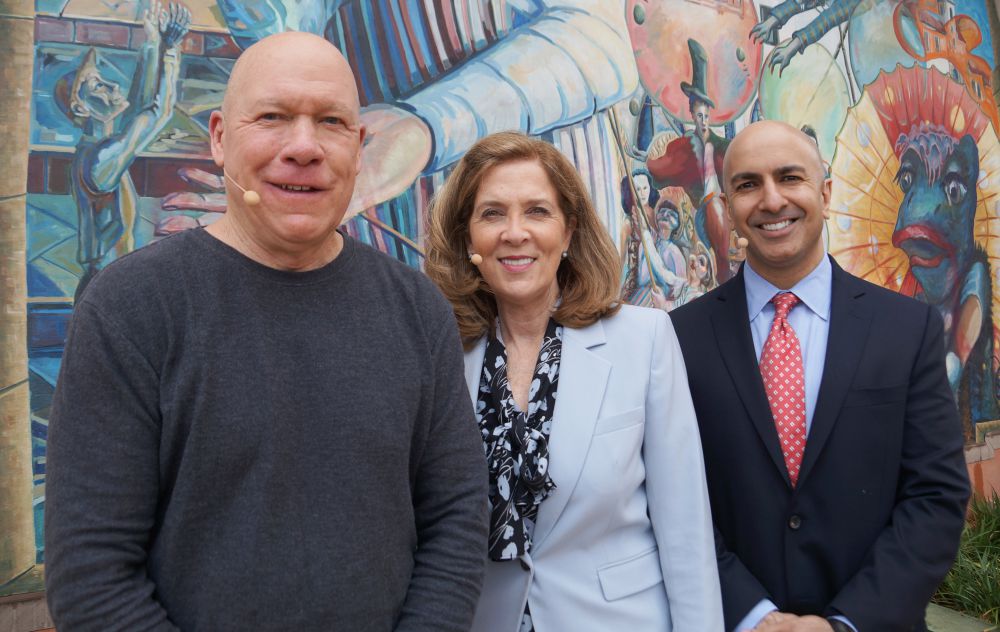
Moderate Speed Ahead
If nothing good lasts forever, you have to wonder: Will the U.S. sustain the second-longest economic expansion in its history? The answer, according to UC Santa Barbara’s Economic Forecast Project for 2019, is a solid “maybe.” Most indicators remain positive, although potential headwinds in the global economy and elsewhere lurk in the background.
The 38th annual economic summit at a packed Granada Theatre also provided a bit of drama when Neel Kashkari, president of the Minneapolis Fed, criticized the Federal Reserve for increasing interest rates while inflation was low.
Kashkari said he believes “monetary policy has been too tight in this recovery, resulting in a slower economic recovery than necessary and low inflation expectations, which directly saps the Fed’s ability to respond to a future downturn.”
In his prepared remarks, Kashkari said the central bank was wrong to raise rates while inflation was below 2%, the Fed’s target for price stability. The Fed’s twin goals of price stability and maximum employment, he said, have historically been treated as “connected like a seesaw.” Its primary monetary policy, then, has been to use interest rates as a lever to boost or slow the economy. Inflation over 2% triggered the brakes of higher interest rates.
“For our current framework to be effective and credible,” he said, “we must walk the walk and actually allow inflation to climb modestly above 2% in order to demonstrate that we are serious about symmetry.”
In his presentation, “Long Live(d) Economic Growth,” Peter Rupert, director of the Economic Forecast Project and a UC Santa Barbara professor of economics, highlighted generally positive data that would suggest the recovery will continue. He displayed a graphic showing that, before World War II, there was a 20% chance of expansion ending after 40 months. After the war, however, the odds were just 5% after 120 months.
The $64 question, naturally, was, what about the current recovery?
“The answer? We don’t know,” Rupert said. “But we see we’ve been able to sustain very, very long recoveries compared to what we did before.”
Also presenting at the summit was Kathy Moe, regional director of the Federal Deposit Insurance Corp. in San Francisco. She noted the banking industry was in “a position of strength” for 2019, and pointed to a number of indicators of continued growth.
She also discussed new development and challenges in the sector, including financial technology (fintech) and the legal marijuana industry.
Looking at broader economic trends, Rupert noted that while the U.S. appears to be on track for modest grown, the global outlook, he said, “kinda sucks.”
“ ‘Kinda sucks’ is an economics term,” he said to laughter. “We define it as not so good.”
Rupert noted that real GDP growth in the four largest economies in the European Union — Germany, France, Italy and the U.K. — have begun to turn down. “They haven’t called it a recession yet,” he said, “but for all intents and purposes it’s pretty much in a recession.”
Domestically, he added, the numbers are much better, with a jobless rate at a 50-year low.
“Today it’s much easier to get a job,” Rupert said. “What does it mean? It means quit rates are also up. In my view, it’s a healthy labor market. Why? Because people quit to get a better job. During the Great Recession, you kiss the boss’ [backside]. You don’t quit. There are no jobs, so you do everything you can to keep your job. Today, people can quit and move to another job, as there is one job vacancy for each unemployed person.”
Potential challenges ahead — what he called “headwinds” — include President Trump’s tariff fight with China, unfunded pension liabilities and rising minimum wages. Tailwinds, on the other hand, include independence of the Fed, the cannabis industry and the nonprofit sector.



